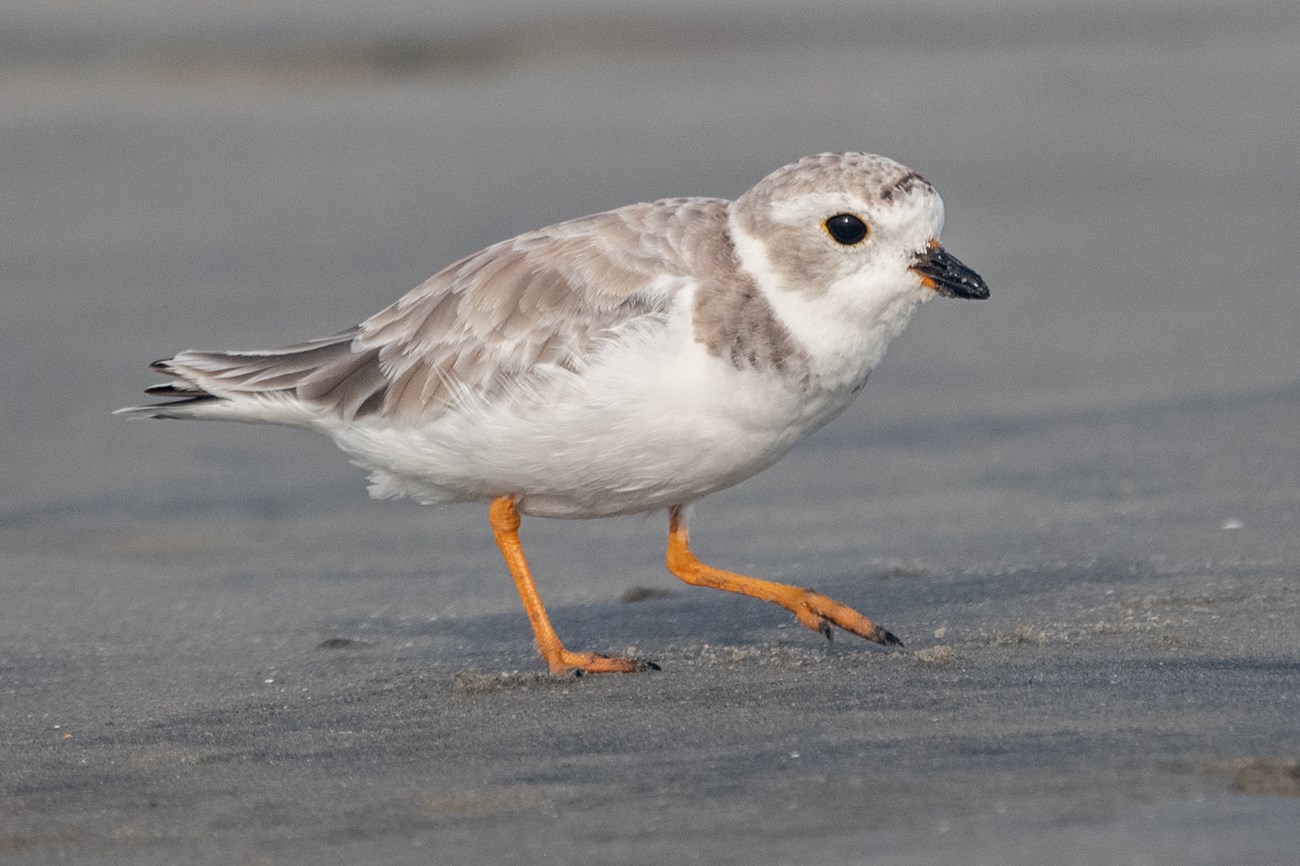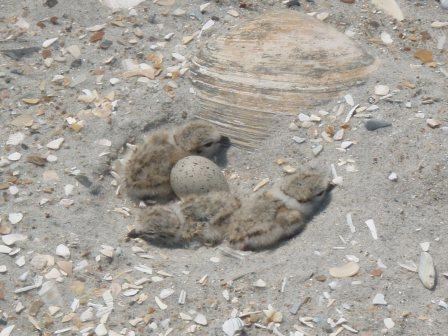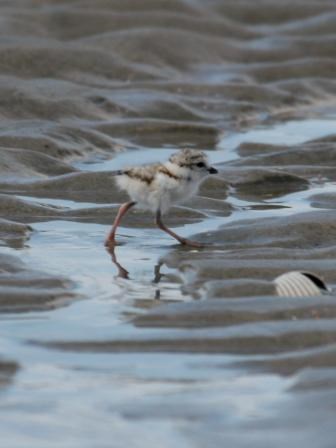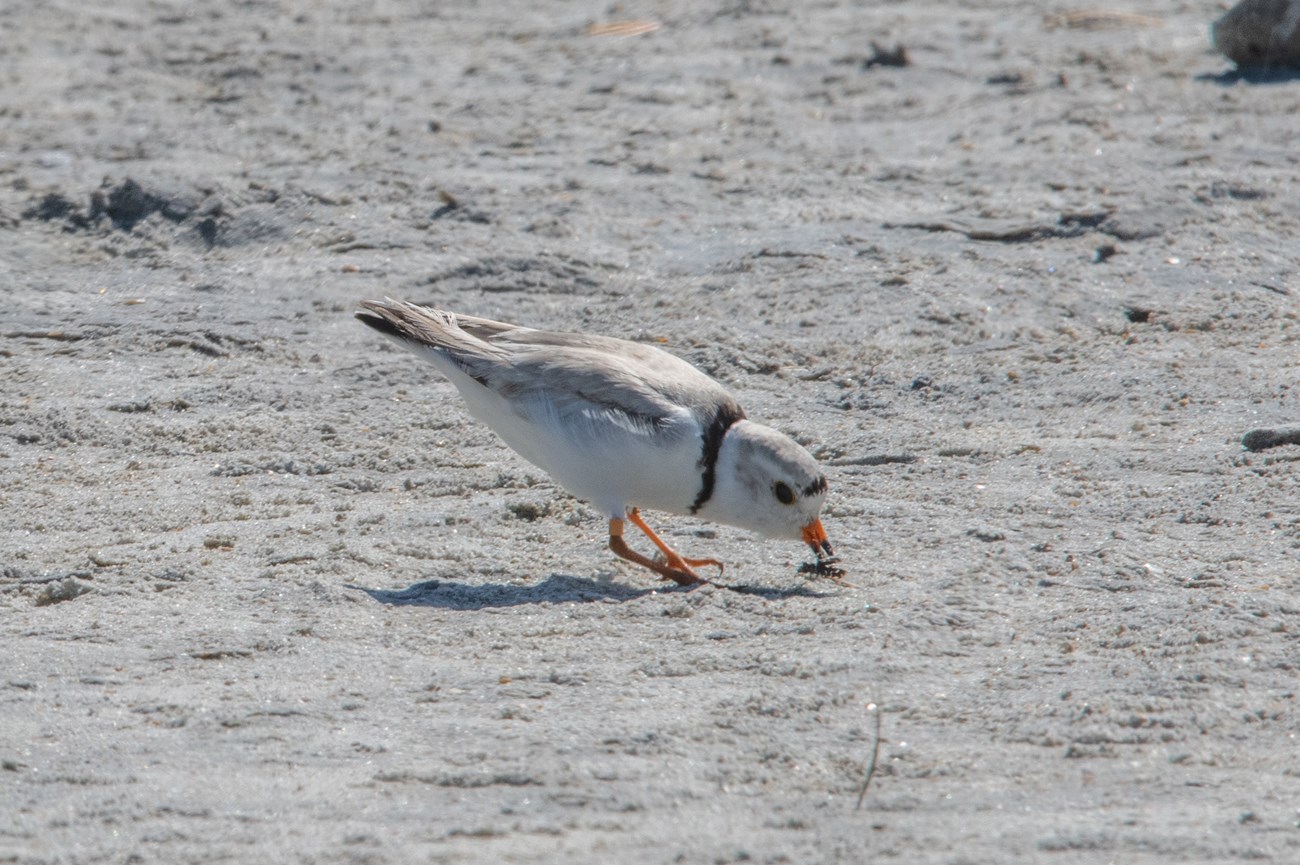
NPS/ Morgan Barnes Cape Lookout National Seashore consists of important habitats, such as sand flats, beaches, intertidal zones, and marshes, that are critical to shorebirds. These undeveloped shorelines provide bird migration, breeding, and wintering habitat. Throughout the year, visitors can see multiple threatened and endangered birds that chose to stop on Cape Lookout’s beaches during their migration, or newly fledged chicks flying across the dunes, learning to use their wings. 
NPS Photo Why Choose Cape Lookout to Nest? 
NPS Photo Piping Plover Chick About two-thirds of the nesting piping plovers in North Carolina are found at Cape Lookout National Seashore. Piping plovers are part of the storm dependent ecology of barrier islands. Storms create good open sand flat habitat and limiting vegetation. Years without storms and vegetation and predators take over the sand flats. The number of nesting pairs declined from 39 in the park in 1994 to just thirteen pairs in 2004. Habitat changes from Hurricane Isabel, 2003, and other storms improved productivity. In 2012, the number of nesting pairs in the park increased to 51. The greatest concentration of nesting piping plovers was found in the four-mile area around Ophelia Inlet. Recently, piping plover pairs increased by forty-five percent between 2020 and 2021, from 22 pairs to 32 pairs. Even though there were more piping plover pairs, hatch success, chick survival, and fledge success decreased. Only eleven of estimated sixty-eight chicks survived to fledging. More information on piping plover nesting success at Cape Lookout National Seashore can be found in the annual reports posted on the publication page. 
NPS/Morgan Barnes Off-road vehicle traffic, and human disturbance of nests are common threats to piping plovers. At Cape Lookout, Resource Management creates nesting closures and wildlife protection zones to help reduce these disturbances. Starting April 1st, Resource Management creates no entry closures which protect the nest from being destroyed, and adults from being disturbed by human activity. Piping plovers can nest in disturbance-free areas, which helps increase the piping plover population. Vehicle closures are created as needed to keep chicks from being run over on the ocean beach. Weather events, ghost crabs, foxes, opossums, and other birds are other common threats to this species. To help reduce protectors attacking the nests, Resource Management will install predator exclosures around the nests to protect them. While visiting Cape Lookout, look for signs designating protection zones to ensure you do not disturb any piping plovers nesting. How Can You Help? You can help increase the piping plover population. Dogs are a threat to piping plovers and plover nests. While visiting Cape Lookout, keep your dog on a six-foot leash to ensure piping plovers are not disturbed. Cape Lookout is a leave no trace park, so while visiting make sure you take all your trash with you. Food waste and trash attract predators to piping plovers. |
Last updated: September 24, 2025
